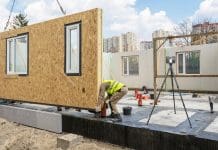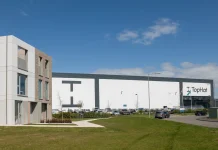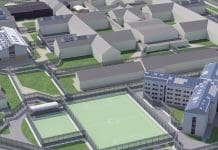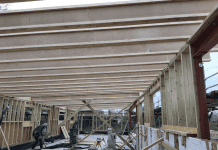Graham Cleland Director of Berkeley Modular and member of the Buildoffsite Governing Forum, shares his perspective on the skills challenge in the offsite construction sector
There has been plenty of discussion and debate in recent times regarding the sufficiency and adequacy of skills to support the general construction sector. In contrast, there has been much less discourse regarding the specific challenges of resource availability in the offsite sector, despite a growing level of interest
Since it would be fair to state that much of the extant capability/capacity of the offsite sector can be characterised as construction under controlled conditions though, it could be argued that offsite construction actually competes with general construction for resource in the same reducing pool of talent. Of course, there have been moves of late to try to help resolve this problem, with bodies such as the CITB publishing a useful report to highlight where focus might need to be directed to help build the skill base to support the increasing appetite for offsite, particularly in residential development.
This report pointed to a number of personas that reflect six key functions covering multiple job roles that are key in offsite construction, including:
- Digital Design
- Estimating/Commercial
- Logistics
- Offsite Manufacture
- On-Site Assembly and Placement
- Site Management and Integration.
Looking at the first of these personas, the CITB reasonably argues that this might be the most important to support the adoption of 3D digital models with rich data, so that designs can be robustly tested/agreed ahead of manufacture. Whilst I would not necessarily disagree with the prominence of a digital design role in offsite, what I would argue is that the proposed scope of this function might be lacking and requires to be extended. In order to radically transform productivity in the offsite sector, it is important to have a grasp of the sort of disruptive technologies/methodologies that represent the biggest levers.
Offsite manufacturing (as opposed to offsite construction) is a concept that relies on such leveraging to create highly productive, scalable factory environments that can deliver high quality, high performing product. So, the broader requirement might be to define this digital design role such that it fits more sophisticated offsite manufacturing philosophies, whereby the skill set includes modelling to quickly create fully-federated, data-rich digital designs which automatically drive manufacturing equipment/technology to produce physical product. In this way, it is easier to conceive how it might be possible to address certain of the Industrial Strategy Challenge objectives, specifically in the context of an increase in the pre-manufactured value of built assets in residential development.
Currently, whilst it is typically the case that a lot of time and effort goes into creating building information models through the various stages of the design process, the quality and robustness of these models is not necessarily fit to support the direct feed to manufacturing equipment/technology to produce physical product from a virtual design. Albeit there are lots of positive outcomes of creating building information models, including the encouragement of multi-disciplinary collaboration in a shared workspace, more precise co-ordination of the digital design to facilitate early clash detection, the removal of potential discrepancies and so forth, current approaches do not support the auto-creation of physical product.
Accordingly, it is common to find digital designs (or more realistically parts thereof) being re-modelled as design progresses and each of these steps effectively constitutes non-productive/time-consuming work. Whilst this reflects a somewhat inefficient, wasteful process in its own right, the real issue is that it results in built assets where there is a lack of correlation between design intent and actual performance. Hence, the broader skill set should help in evolving a logic based on a robust and efficient process for creation of digital designs and clever modelling-machine coding logic yielding product where there is correlation, and there is a golden thread of asset information from the point of model creation to handover to end-customer.
Of course, what this notion does imply is that much design development and proof testing work has to happen off-line, that is, not during a live project. There is plenty enough challenge in devising/applying a robust and efficient process for the creation of data-rich, fully federated digital designs, without having to worry about resulting performance across themes such as fire resistance of a structure, acoustic attenuation, dimensional accuracy of manufactured product, etc. This off-line work reflects some of the complementary skills required of the digital design role to facilitate talent being delivered into the offsite sector that understands both that something is to be made as well as what is to be made.
This fuller expectation still fits with the CITB’s digital design persona, but the scope the role requires to be extended and then the work to find appropriate training providers can begin in earnest.

















